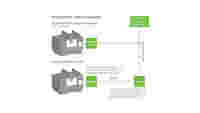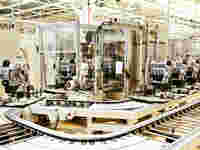Digital and Independent with MTConnect

The digital transition requires increased networking between different components, machines, production facilities, and even companies. Gradually, manufacturers are equipping their machines to exchange information.
Yet many machines that are currently used in the processing industry still function as closed units. At most, the machines have access to sensors for detecting temperatures, setpoints, and cycle times. However, they do not have the ability to forward these valuable data. Thus, digitization could already end at the machine level,
Your profits from MTConnect:
- The digital MTConnect interface for WAGO PFC100 Controllers allows networking of machines using the license-free, open-source standard.
- MTConnect is a universal digital interface based on a simple ETHERNET standard, so it can be easily integrated into existing machines.
- This simple concept enables companies with complex machines and processes to effortlessly digitize their manufacturing environment.

